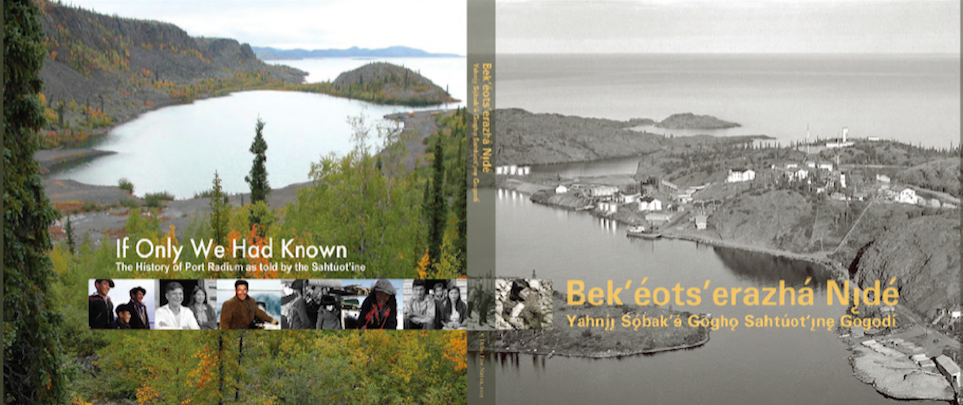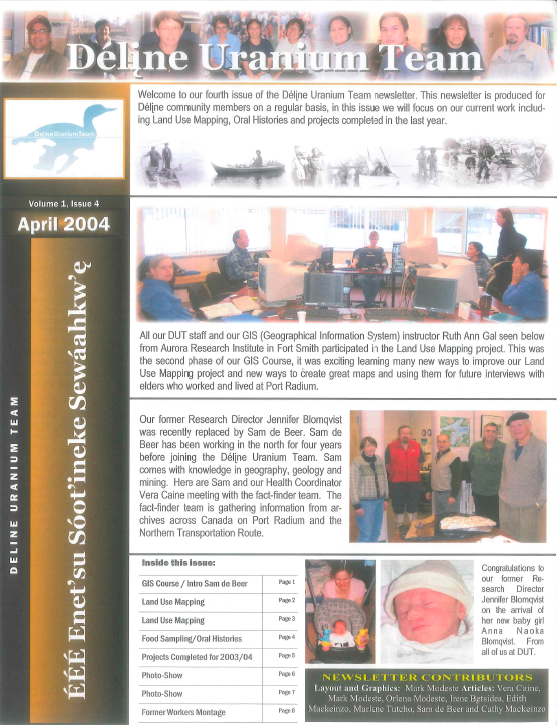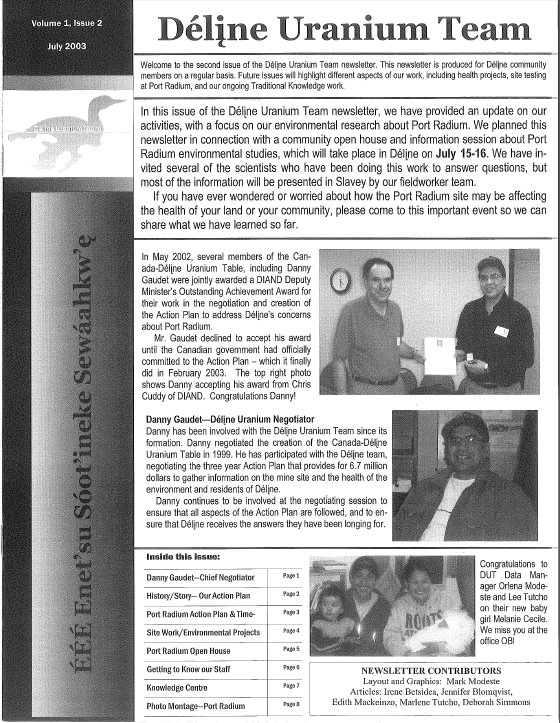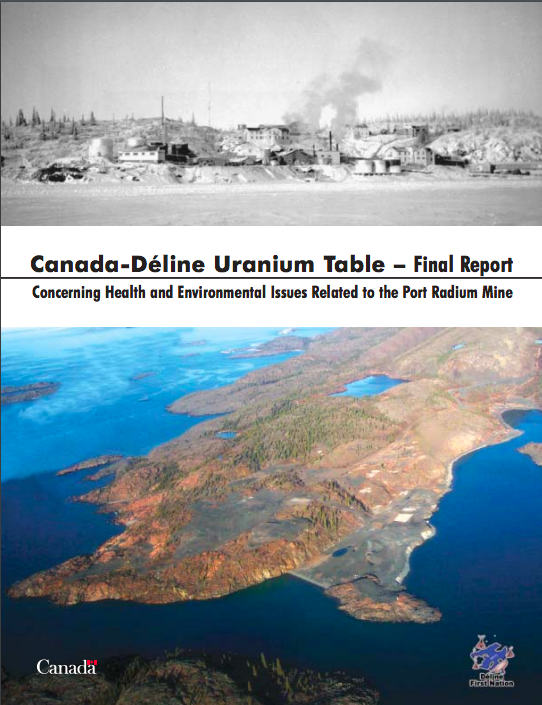A Fine Balance? Aboriginal Peoples in the Canadian North and the Dilemma of Development
Slowey identifies a rhetorical trend that frames the choice between development and land claims as a choice between “capitalism or traditionalism, assimilation or fossilization (2009: 229). This false binary is antithetical to self-determination, which often requires both economic development and cultural preservation as joint efforts (gas for snowmobiles, for example). Slowey further suggests that informal connections in a community are effective mechanisms of creating pragmatic self-governance, while formal agreements are capitulations that normalize “the existing the relations of the state” (Slowey 2009: 236). Nonetheless, self-government is one step towards detachment, if not decolonization, and may be the best possible scenario until Aboriginal communities can grow autonomously.
Access this Resource:
Read Chapter 9 in the Google Book Preview below or on Google Books.
Slowey, Gabrielle. “A Fine Balance? Aboriginal Peoples in the Canadian North and the Dilemma of Development.” In First Nations, First Thoughts: The Impact of Indigenous Thought in Canada, edited by Annis May Timpson, 229-243. Vancouver: UBC Press, 2009.
Aboriginal participation, consultation, and Canada's Mackenzie gas project
This paper provides an overview of the oil and gas industry’s interest in Arctic and Subarctic regions, and the negotiations between industry, governments, the market, and Indigenous peoples. Many communities face pressure to support development projects. Northern Canada’s Mackenzie Gas Project is the focus of this article, and its interactions with Indigenous peoples in the Mackenzie region. The paper examines both local and industry perspectives, including Indigenous concerns over participation and consultation.
From Abstract:
For the oil and gas industry, Arctic and Subarctic regions are considered to be some of the world's last energy frontiers, increasingly important for meeting global energy demands. As exploration intensifies and oil and gas development occurs in more of the Arctic, indigenous peoples are increasingly concerned about the interest of industry, national governments, and the far-reaching impact of the world market in their homelands. Pressure to sign on to development projects, to communicate and negotiate with industry and governments, and to adapt to a changing environment resulting from the activities of extractive industries is increasing. As a result, some indigenous peoples feel that they are losing control over their homelands and over their livelihoods. This article examines northern Canada's Mackenzie Gas Project and its possible implications for Aboriginal peoples in the Northwest Territories and northern Alberta. The Mackenzie Gas Project would see the development on Aboriginal lands of natural gas from three fields in the Mackenzie Delta area for delivery to markets in Canada and the United States by a pipeline up the Mackenzie Valley. The article looks at some of the key issues of this controversial project, examines local concerns over participation and consultation, and shows how it provides insight into some of the contested perspectives on the future of northern Canada, its peoples and the environment.
Abstract:
The full text of this article is hosted on Energy and Environment and EconPapers, but is not currently open access.
Nuttall, Mark. “Aboriginal participation, consultation, and Canada’s Mackenzie Gas Project.” Energy & Environment 19, no. 5 (2008): 617-634.
Water hearts and cultural landscapes: Practical understanding and natural resource management in the Northwest Territories, Canada
This dissertation explores how socio-cultural and political practices enable people to become institutional bricoleurs in resource management.
Abstract:
The Canadian North finds itself in a period of Canadian history with unprecedented levels of social and environmental complexity, political uncertainty and economic change. Within the Mackenzie River valley of the Northwest Territories, major industrial resource development projects are underway. At the same time, innovative natural resource management (NRM) governance institutions are being proposed. This dissertation explores how socio-cultural and political practices enable people to become institutional bricoleurs in resource management. From Déline, Northwest Territories, I examined how outside resource managers from federal and territorial governments, environmental non-government organizations, and aboriginal community leaders perceive, negotiate and practically apply one another's diverse understandings of NRM. This research is based on my active working group participation in two locally-driven collaborative projects: the Great Bear Lake Watershed Management Plan (GBLMP) and the long-term protection of an aboriginal cultural landscape for Sahoyúé-Ehdacho (Grizzly Bear Mountain - Scented Grass Hills National Historic Site). Within these cases of emergent community-based co-management, an ethnographic approach was pivotal in exploring new approaches to NRM arising from the dynamic relations between local and outside institutional actors. Recognition and incorporation of the notions of difference and practice establishes a space for potential positive social change. I suggest that the term `practical understanding' encapsulates how communities and outside agencies together perceive NRM. In the process of developing the GBL watershed management plan, creating a relational space resulted in shared understanding of resource management through narratives such as the story of the Water Heart. For shared understanding to be applied in the development of new formal institutions, however, it must be reconsidered as practical understanding and part of strategy in social practice. The political process of protection for Sahoyúé-Ehdacho demonstrated that strategies as engagement and practical disengagement are integral to practical understanding. The significance of this perspective of NRM is that it offers a cultural framework with which to explore institutional hybridity. Such a framework requires an examination of the ways in which we perceive, conceive and actively apply culture and power relations in resource management planning that is predominated by the increasingly globalized nature of natural resources.
Access this Resource:
This dissertation can be requested from ProQuest.
Caine, Kenneth James. Water hearts and cultural landscapes: Practical understanding and natural resource management in the Northwest Territories, Canada. Doctoral Thesis, University of Alberta, 2008.
Beyond Bureaucracy: Collaborative relationships in the transition to co-management – a case study in the Sahtu Region, Northwest Territories, Canada
From Abstract:
This study takes as its starting point the hypothesis that manager-harvester relationships are a key indicator of successful co-management processes. Interviews were conducted with senior resource managers from the Sahtu Region of northern Canada to obtain their assessment of evolving manager-harvester relationships before, during and after the establishment of co-management institutions. Interview narratives were analysed to shed light on changes and continuities in the participation of indigenous people in decision-making This led to the conclusion that the institutionalization of collaborative relationships within the bureaucratic framework of co-management has had a negative affect on indigenous participation. Nevertheless, the co-management regime was found to be surprisingly adaptive as a result of certain key continuities in the resource management system; a history of strong relationships between resource managers and harvesters, and a problem-solving approach by managers appeared to be stronger than the depersonalized and bureaucratic aspects of co-management institutions. Thus the study confirms the ongoing significance of social capital as a determinant of successful co-management.
Access this Resource:
Request this thesis from Stockholm University.
Carthew, Ruaraidh. Beyond Bureaucracy: Collaborative relationships in the transition to co-management—a case study in the Sahtú Region, Northwest Territories, Canada. Master’s Thesis, Stockholm University, 2007.
If only we had known: The history of Port Radium as told by the Sahtuot'ine
This book-length text’s release coincided with the 2005 report of the Canada-Délı̨nę Uranium Table. It emphasizes the Sahtúot’ı̨nę perspective on Port Radium, contextualized with local history and the personal and community impacts of the uranium mine.

Access this Resource:
This book is available from many Canadian University Libraries (e.g., University of Toronto). ISBN: 9780973772708.
Délı̨nę Uranium Team. If only we had known: The history of Port Radium as told by the Sahtuot’ine. Délı̨nę: Délı̨nę Uranium Team, 2005.
Canada-Deline Uranium Table Final Report
From Abstract:
The Canada-Deline Uranium Table (CDUT) was formed by the Deline First Nation and the federal government in 1999 to address community concerns about the environmental and health impacts of the Port Radium uranium and radium mine, which operated from 1931-1960 and whose activities were supported by workers from Deline. In the 1980s, people in Deline began to learn of the damages to human and environmental health that can be caused by radium and uranium mining, causing community members to fear for the safety of their land and traditional foods and to connect recent cancer suffering in the communtiy to past radium and uranium exposures. The CDUT Final Report describes the studies and activities carried out during Action Plan implementation and presents all associated findings and recommendations. Key findings include: the Port Radium mine was generally in compliance with contemporary regulations relevant to uranium milliing and mining; it is not possible to know for certain if the death or illness of any given individual was directly caused by radiation exposure; and healing activities focused on the affirmation of Dene culture and identity have proven helpful in the aftermath of this problem.
Access this Resource:
The PDF is available online.
Indian and Northern Affairs Canada, Health Canada, Natural Resources Canada, and Délı̨nę First Nation. Canada-Délı̨nę Uranium Table Final Report. Ottawa: Indian and Northern Affairs Canada, 2005.
Sahtú Regional Workshop on the Social Impacts of the Mackenzie Valley Gas Project
This report summarizes proceedings from a Sahtú workshop held in Norman Wells on September 30, 2005. It was the third of three workshops sponsored by the GNWT, held in Inuvik and Fort Simpson. Participants were asked to discuss the positive and negative impacts of the Mackenzie Valley Gas Project in four main areas: employment and income, housing, justice, and health and wellness. They discussed concerns about alcohol and drug use, violent crime, Elder abuse, and the well-being of youth, including youth who are not respectful of Dene traditions.
Access this Resource:
No PDF. A physical copy of this document was found at the University of Alberta Circumpolar Collection: Cameron Library, call number HN 104 S24 2005.
Lutra Associates. Government of the Northwest Territories-Sahtú Regional Workshop on the Social Impacts of the Mackenzie Valley Gas Project. Norman Wells, 2005.
Dene Ways of Respecting the Land and Animals
This project was initiated by the Sahtú Renewable Resources Board to explore the way of life of the Sahtúot’ine and to discuss Dene laws relevant for natural resource management. As the first inhabitants of the Great Bear Lake area, the Sahtúot’ine have certain resource management goals. In order to achieve these goals, government management agencies and industry must be made aware of these goals and begin to understand and respect the way of life of the Sahtúot’ine. The way of life of the Sahtúot’ine reflects their local knowledge, needs and rights as traditional keepers of the land. It is important to note that this may only be relevant to the Sahtúot’ine who reside in the Great Bear Lake area.
Access this Resource:
Modeste, Jane. Dene Ways of Respecting the Land and Animals. Délı̨nę: Délı̨nę First Nation, 2005.
Available from the Ɂehdzo Got’ı̨nę Gots’ę́ Nákedı archives. Contact This email address is being protected from spambots. You need JavaScript enabled to view it. for access and see the Release and User Agreement form on the database home page.
ÉÉÉ Enet’su Sóot’ıneke Sewáahwę, Délı̨ne Uranium Team Newsletter 3
This newsletter provides an update on the activities of the Délı̨nę Uranium Team, the group dedicated to researching and restoring the Port Radium region. The April 2004 issue shows the Délı̨nę Uranium Team learning about GID through the Land Use Mapping Project from instructor Ruth Ann Gal of the Aurora Research Institute. It mentions the name of a new Research Director, Sam de Beer.
The Land Use Mapping Project began training in 2003, and taught database design (with Microsoft Access/Excel and ArchView GIS). In Late 2003, the team created maps and interviewed people who lived and worked in Port Radium to understand how they used the land for hunting, trapping and ore transportation. Importantly, this issue contained an article reassuring readers that Délı̨nę food samples had been collected and sent for testing in the South, and that there were no higher levels of uranium or arsenic found in the local fish and meat. Simultaneously, a summary of oral histories presents findings that tailings and contaminants were spilled into the lake or river, that bags sometimes broke, and that ore carriers were often exposed to ore dust with no warning or precautions. Many of the Dene people who worked at Port Radium were loggers. The Délı̨nę Uranium Team held a photo show and film screening to convey their findings to the community.

Access this Resource
Available from the Ɂehdzo Got’ı̨nę Gots’ę́ Nákedı archives. Contact This email address is being protected from spambots. You need JavaScript enabled to view it. for access and see the Release and User Agreement form on the database home page.
Délı̨ne Uranium Team. ÉÉÉ Enet’su Sóot’ıneke Sewáahwę, Délı̨ne Uranium Team Newsletter 3 1, no. 4 (April 2004).
ÉÉÉ Enet’su Sóot’ıneke Sewáahwę, Délı̨ne Uranium Team Newsletter 2
This newsletter provides an update on the activities of the Délı̨nę Uranium Team, the group dedicated to researching and restoring the Port Radium region. Issue 2 talks about the Canada-Délı̨nę Uranium Table’s outstanding achievement award for the group’s negotiated action plan: “Mr. Gaudet decline to accept his award until the Canadian government had officially committed to the Action Plan-which it finally did in February 2003.” Issue 2 also has an overview of the history of the Uranium Committee, founded in 1998 in response to community concerns. It talks about some environmental and food testing procedures, and gives staff profiles as well as meeting and conference overviews.

Access this Resource:
Available from the Ɂehdzo Got’ı̨nę Gots’ę́ Nákedı archives. Contact This email address is being protected from spambots. You need JavaScript enabled to view it. for access and see the Release and User Agreement form on the database home page.
Délı̨ne Uranium Team. ÉÉÉ Enet’su Sóot’ıneke Sewáahwę, Délı̨ne Uranium Team Newsletter 2 1, no. 3 (July 2003).



 Phone: 867-374-4040
Phone: 867-374-4040 Email:
Email: